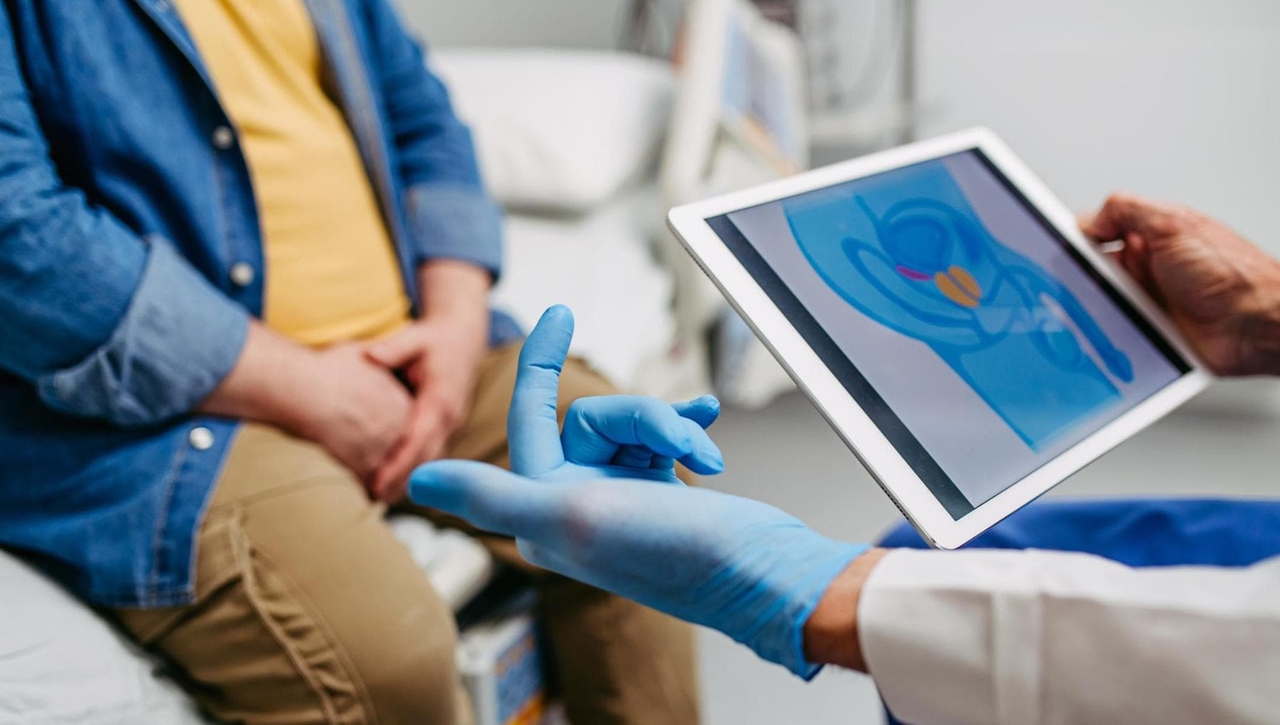Prostate cancer: looking at the "shape" of DNA to understand how aggressive it is

Differentiating early, and increasingly better, between patients whose prostate cancer is indolent or slow-growing (which is the majority) and those who will require more aggressive treatment because they are at greater risk of recurrence. This goal remains a challenge today, but a new clue comes from DNA. Or, more precisely, from how it is "packaged" within tumor cells.
(Also) a question of formAn Italian study published in Nature Communications and conducted with the support of the AIRC Foundation (Italian Association for Cancer Research) reveals this: "Our DNA is about a couple of meters long, but it's contained within a diameter of just 10 millionths of a meter: it's as if a 200-kilometer rope had to fit inside a one-meter-wide bag," Francesco Ferrari , Director of the Computational Genomics Laboratory at IFOM, the AIRC Institute of Molecular Oncology in Milan, and a researcher at the CNR in Pavia, explains to Salute. For this to happen, the substance it's made of, chromatin, folds in a highly sophisticated way: a three-dimensional organization that also determines gene expression.
“What we discovered is that, in prostate cancer cells, DNA is packaged differently in two tumor subtypes, attributable to different degrees of risk of recurrence,” continues Ferrari, coordinator of the study together with Chiara Lanzuolo , also a researcher at the CNR, Director of the “Chromatin and Nuclear Architecture” laboratory at the National Institute of Molecular Genetics (INGM) and the IRCCS Ca' Granda Ospedale Maggiore Policlinico hospital in Milan.
A new molecular signatureThe scientists then compared the two tumor subtypes to identify a molecular signature capable of predicting the patients' clinical course. The identified signature consists of 18 genes, which was then researched and validated with data from 900 additional patients stored in international databases. The study—made possible thanks to a long-standing collaboration between our research groups and a truly interdisciplinary approach—could therefore have very concrete implications in the near future.
The role of the tumor microenvironment"To date, we don't know whether the three-dimensional reorganization of DNA within the nucleus of tumor cells is a cause or a consequence of the increased aggressiveness of the disease," Ferrari continues. "But, if our results are confirmed, it could represent a new epigenetic marker for personalizing treatments in the future. Furthermore, we observed that these changes occur alongside modifications in the stroma, the healthy connective tissue surrounding the tumor in the prostate gland: further confirmation that the tumor and the tumor microenvironment 'talk' to each other." The hypothesis, which needs to be confirmed, is that this dialogue influences the aggressiveness of prostate cancer.
Movember and the “Synonyms & Controls” campaignThe study, as mentioned, is among many funded by the AIRC Foundation, which is celebrating its 61st anniversary with "Research Days" until November 16th. The foundation is also joining Movember, the global movement created to promote greater awareness of the importance of healthy habits for men. It does so with the digital campaign " Synonyms & Controls ": an invitation to discuss prevention in a humorous, simple, and authentic way, to transform awareness into action, breaking the taboo that often surrounds men's health. Last year alone, in Italy, an estimated 214,000 new cases of cancer were reported among men, including approximately 40,000 prostate cancers.
The "Research Chocolates" are backFurthermore, on Saturday, November 8th, the Airc Foundation will return to Italian squares and schools for " I Cioccolatini della Ricerca ," dark chocolates by Venchi. This is an opportunity to contribute to cancer research with a minimum donation of €15 (the chocolates are also available online on Amazon throughout the month). "My colleagues and I," Ferrari concludes, "would like to thank the Airc Foundation, without whose support this study would not have been possible. It represents a concrete example of how Italian research can contribute to the advancement of precision medicine."
La Repubblica




